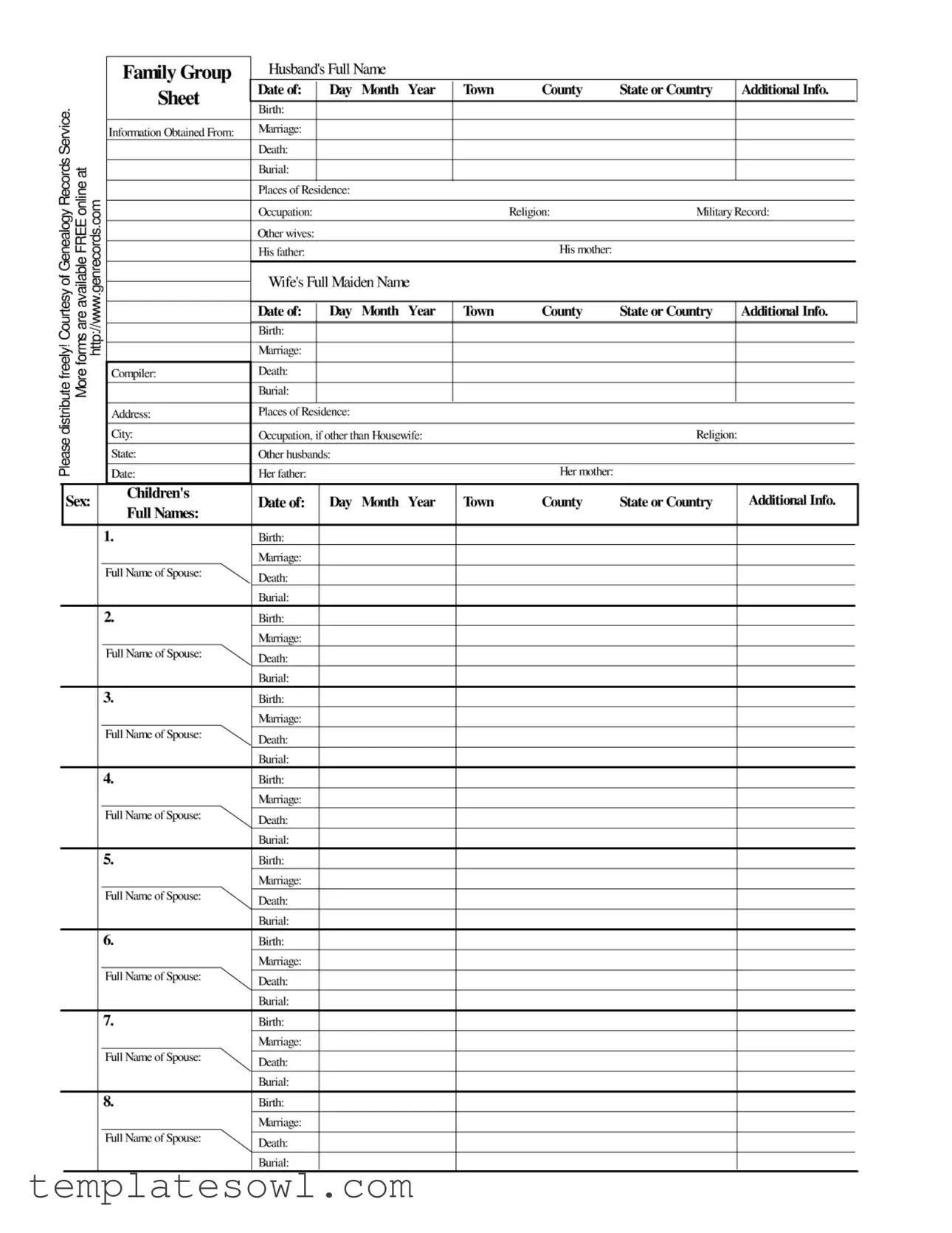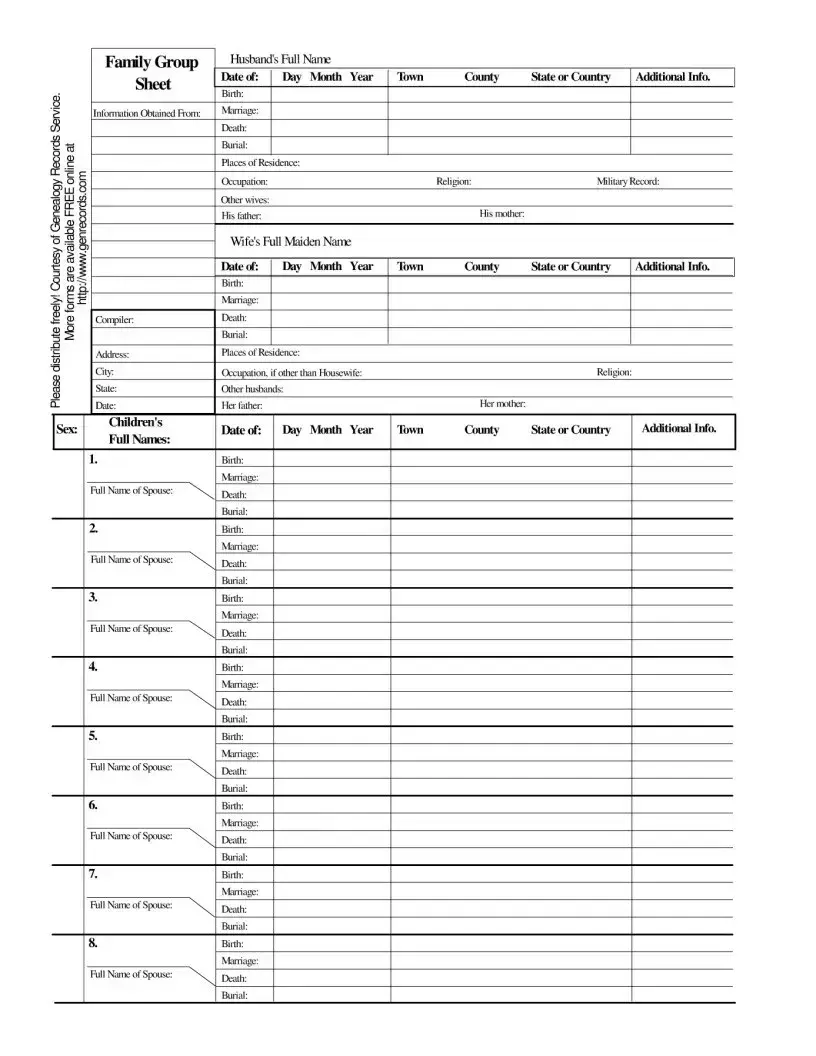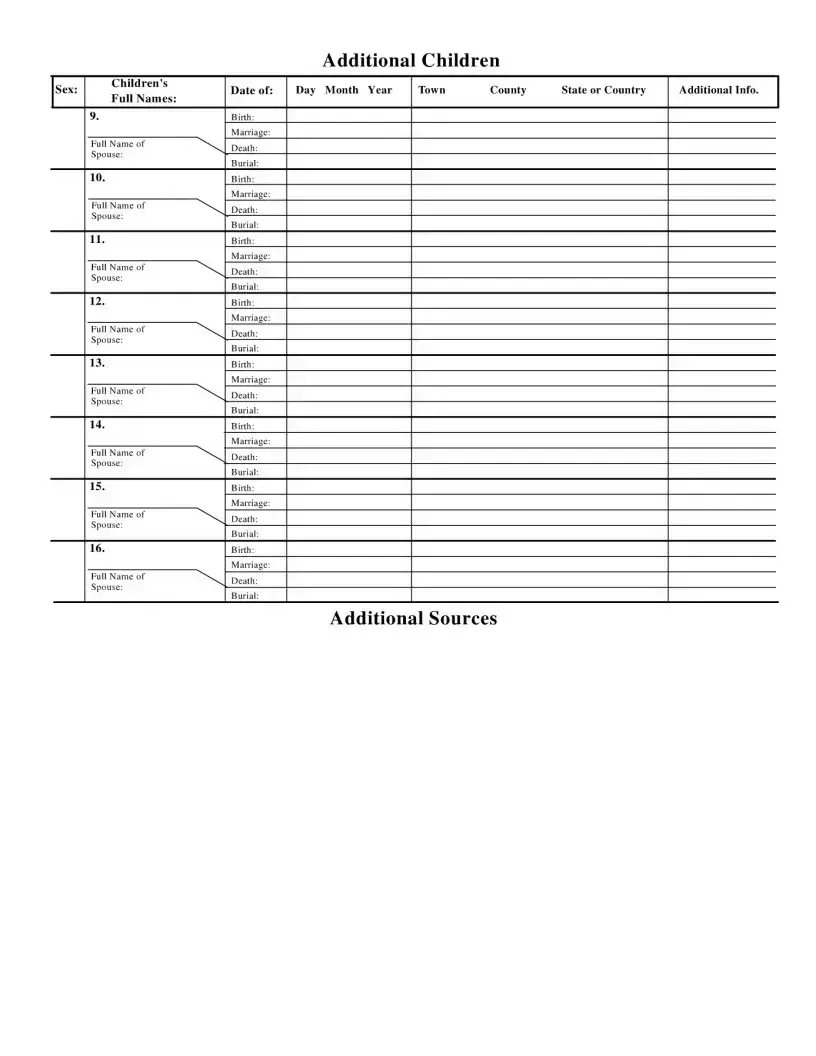What is a Family Group Sheet?
A Family Group Sheet is a structured document designed to compile and organize family information for genealogical research. It allows individuals to record details about family members, including their relationships, significant life events, and relevant historical data. This sheet serves as a valuable tool for both personal records and broader family history projects.
How do I fill out a Family Group Sheet?
To complete a Family Group Sheet, begin with the husband and wife section. Enter the full names, dates of birth, marriage, death, and burial for each spouse. Include an array of information, such as places of residence, occupations, religious affiliations, and military records. Under each couple, list their children, noting any marriages and the respective dates for each child. This process outlines a clear family lineage.
What information should I include for each person?
For each family member, gather comprehensive facts including their full names, birthdates, marriage details, death records, and burial locations. You should also note places of residence and occupations, as well as any relevant religious affiliations or military service. This information will paint a richer picture of the family history when viewed collectively.
Why is it important to document the family's occupation?
Documenting family occupations can provide insight into the social and economic standing of different generations. It reflects the historical context in which the family lived, revealing patterns of work and mobility, as well as contributing to the overall narrative of the family's heritage. This information can be meaningful for descendants and researchers alike.
What if I do not have all the information?
It is not uncommon to encounter gaps in family history. If complete information is unavailable, it is acceptable to leave sections blank or to make note of "unknown" where applicable. You can revisit these sections over time as new information might come to light through research or family memories.
Can I use a Family Group Sheet for more than one family unit?
While a Family Group Sheet typically documents one family unit at a time, you can certainly create multiple sheets to cover extended family lines. Each sheet can represent a different branch of the family tree, allowing for a comprehensive view of your family's genealogy.
What are additional sources and why should I include them?
Additional sources might include documents such as birth certificates, marriage licenses, obituaries, or census records that support the information listed on the Family Group Sheet. Recording these sources enhances credibility and provides a trail for future researchers to follow when verifying family details.
How can I maintain the accuracy of the information on the Family Group Sheet?
To ensure accuracy, cross-reference information with reliable sources like public records, family archives, or online genealogical databases. Connecting with family members who may have additional knowledge or documents can also aid in verifying details. Regularly updating your Family Group Sheet as you discover new information is essential to maintain its reliability.
Is the Family Group Sheet useful for professional genealogists?
Absolutely. Professional genealogists frequently utilize the Family Group Sheet as it helps structure and visualize complex family relationships. It serves as a foundational tool in constructing family trees and aids in organizing research efficiently, making it easier to identify connections and gaps in the family history.
Where can I find a blank Family Group Sheet?
A blank Family Group Sheet is readily available online through various genealogical resources and websites. Many organizations dedicated to genealogy provide downloadable templates that can easily be printed or filled out digitally. Local libraries or historical societies might also have copies available for community use.


